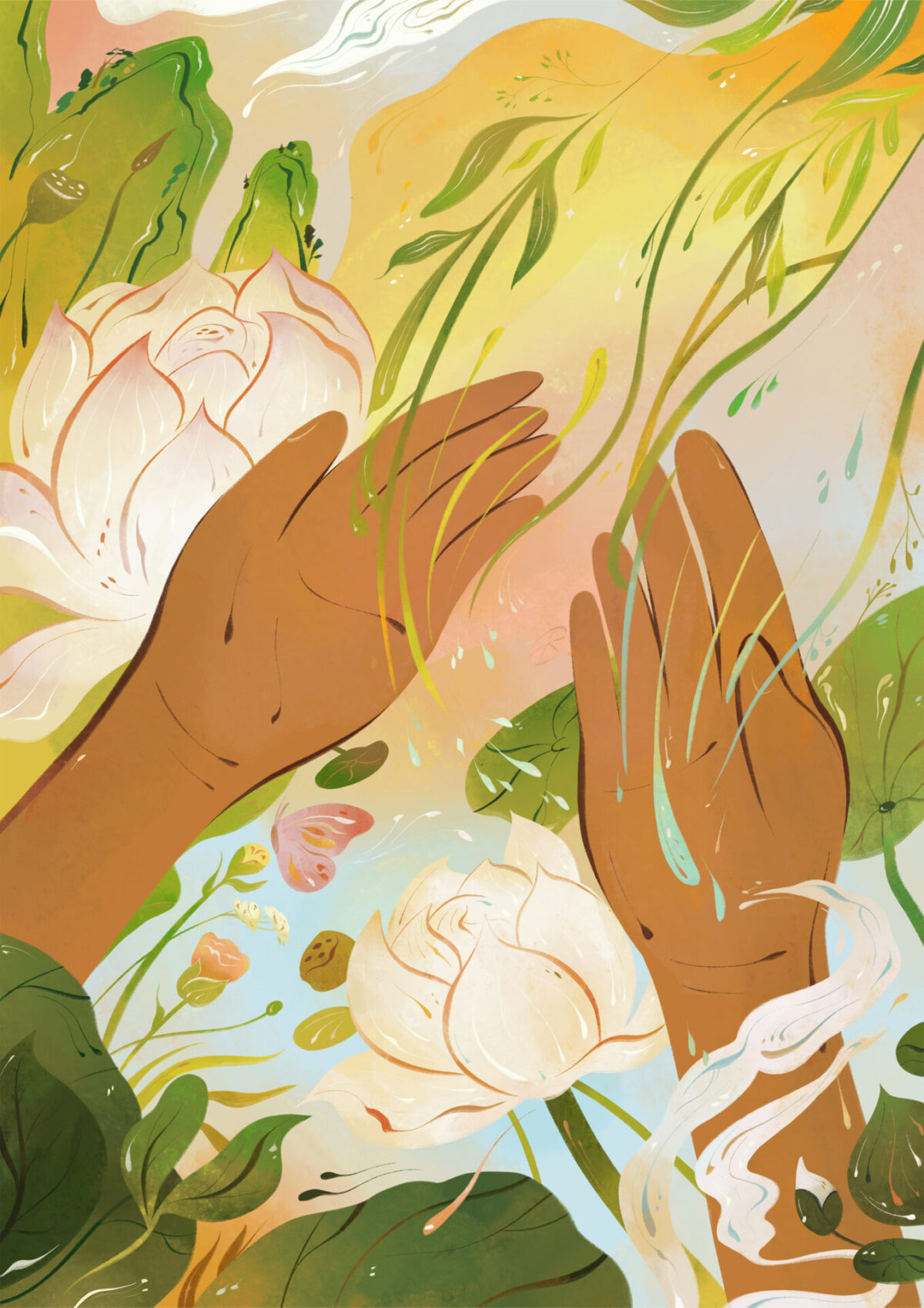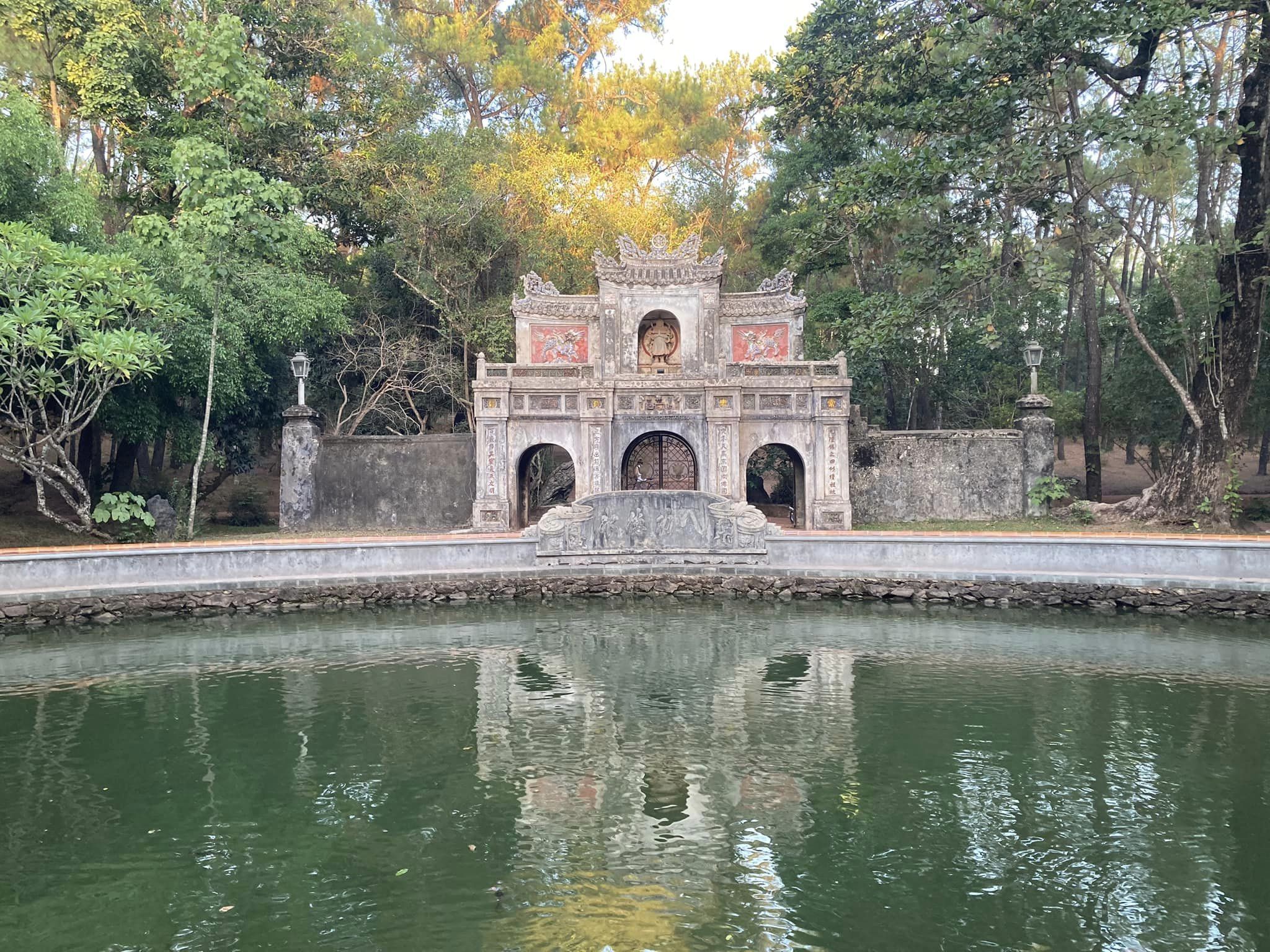An offering from ARISE1: Dharma teacher Marisela B. Gomez uses inspiration from Thích Nhất Hạnh to show us how to transform the suffering of racial injustice.
By Marisela B. Gomez MD on
A lineage both traces back to our ancestors and continues forward through our descendants. In reflecting on how the fourfold Sangha is a continuation of our dear Thầy,
An offering from ARISE1: Dharma teacher Marisela B. Gomez uses inspiration from Thích Nhất Hạnh to show us how to transform the suffering of racial injustice.
By Marisela B. Gomez MD on
A lineage both traces back to our ancestors and continues forward through our descendants. In reflecting on how the fourfold Sangha is a continuation of our dear Thầy, we see, too, how Thầy’s teachings can be traced back to the Buddha and the foundational Four Noble Truths. There is the recognition that there is suffering, there are causes of suffering, there is a way to end the causes of suffering, and this way entails seeing and understanding things clearly as they are so we may transform the causes of suffering into sources of happiness. Thầy is known to the world as one of the founders of socially Engaged Buddhism because he saw and taught clearly that these Noble Truths are the same in our daily interpersonal interactions and in the systemic social inequities that lead to racism, war, and other oppressions. Inspired by Thầy’s teaching and example, ARISE Core Group member and Dharma teacher Marisela B. Gomez penned “Practicing with the Four Noble Truths in the World,” which invites practice with the Noble Truths through the lens of the intersectional suffering that arises from racial and social inequities. We offer this teaching as a continuation of Thầy's efforts to assure a Buddhism for everyone, no matter where they are located. The Four Noble Truths was used as the framework for ARISE's recent training entitled Race: A Dharma Door. Thầy transitioned from his body while we were practicing with the Fourth Noble Truth, reminding us that his legacy, when practiced, is the path away from suffering. We are grateful to our beloved teacher for teaching us how to practice with the Four Noble Truths in the world. With deep gratitude, The ARISE Core Group: Antoinette González Kim Fleisher Lori A. Perine Marisela B. Gomez Renita Wong Victoria Mausisa
The First Noble Truth: Understand that the suffering of racial injustice exists
If we were to practice with the suffering in the world, we would be invited to acknowledge and understand this truth and the different ways it manifests—its history and its legacy. We can acknowledge the history of the US, a country built through racial oppression of enslaved African Americans, Native Indigenous peoples who inhabited this land before the colonists arrived, and other people of color who migrated from the Global South, such as Asians, Latinx, and Pacific Islanders. The legacy of this history continues today, in different forms since the 1600s when the first enslaved Black person was brought to the US. The nobility of acknowledging truths that lead us to our liberation is our path. The pain of this suffering, experienced by both BIPOC (Black, Indigenous, and other people of color), and non-POC can be acknowledged and embraced:
Hello my trauma, anger, sadness, impatience, and hurt of racism; I know you are there and I will do my best to take good care of you; I will not shy away from you and cover you up. I will learn skillful ways to recognize how and where you manifest, the effects on my body and mind, and how this pain affects others, and slowly heal you.
The Second Noble Truth: Abandon the path leading to the suffering of racial injustice
When we take time to understand the history of racial oppression, we begin to understand why the inequity between whites and people of color exists today and can practice abandoning this path. For example, we understand that enslaved African Americans were exploited to cultivate the land and to labor in all sectors of society to provide great wealth to plantation owners, who in turn participated in an economy that enriched white people in all sectors of society. The effect of individual and collective greed fueling and leading to aversion/hatred of people of color—mediated through a collective delusion of race and class-based inferiority, superiority, and equality complexes—fabricated the ideology and structures of the US and beyond. This fabricated society assured that there was no opportunity for African Americans to own land, to attend schools, to be paid for labor, to receive appropriate medical care, to live in adequate and safe housing, etc, etc. This tremendous disadvantage for African Americans and Native Indigenous peoples (who were displaced from their land) for the past four hundred plus years—and other people of color in subsequent years—has resulted in the greatest wealth and health gap between whites and African Americans—and BIPOC. For example, the life expectancy in neighborhoods of low-income Black people can be ten to fifteen years less than higher income white neighborhoods. This continues to occur across the US in every city. These structural inequities were enforced against populations of people based on their race and class. This violence caused pain and suffering, traumatizing African Americans, Native Indigenous peoples, and other BIPOC. Racial oppression causes trauma in our body and mind. Hatred is an energy that diminishes the energy of love. No one benefits from hatred, and everyone requires healing. We can take care of this suffering:
My dear body and mind, I know that the generational trauma of racial injustice still lives in my body and mind; I hold you dearly, with love and tenderness, and release you to Mother Earth for transformation and healing. I know that the effects of such violence still live in my body as a descendant of the oppressed and of the oppressor and I acknowledge this pain in me and will take good care of you. Because we are interconnected, the searing of the whip against a Black body is my scar today; I hold it with tenderness and release. There is no separation: as my heart heals and the scars diminish in this oppressed/oppressor body, a heart heals and a scar diminishes in the oppressor/oppressed body. I make the determination to continuously practice abandoning the ways I have internalized and continue to externalize this legacy of violence in my thoughts, speech, and actions.

The Third Noble Truth: Realize the end to this suffering of racial injustice
As we turn toward this suffering of racial injustice and heal the wounds in our body and mind, we begin to heal this trauma. The release and realization of this suffering in our body and mind heals the fear and anxiety of continued racial trauma. Even while we might continue to experience racial injustice or intentionally or unintentionally perpetuate racial injustice, we meet these new experiences with a heart and mind that is better able to respond. Our response and suffering will not be motivated by an old trauma/second arrow2 but instead can address and take good care of the first arrow: the acute suffering of a new form of racial injustice. We will be able to practice right action and take good care of new forms of racial oppression, thereby preventing new traumas and scars from forming.
I make the determination to realize racial healing and equity in my thoughts, words, and actions; I will not be afraid to acknowledge this pain when it arises, take good care of it, and realize freedom from this pain in each moment. I recognize that I must stop and find stillness in order to realize the end of this suffering in each moment and prevent new suffering from developing.
The Fourth Noble Truth: Develop a path leading to the end of racial injustice
This path is our path of understanding and healing. We practice the Noble Eightfold Path by resolving to not continue to perpetuate racial injustice, neither by accepting it nor producing it. Our right view of racial injustice moves us toward right actions of ending existing racial injustice as we fearlessly identify it occurring in us and around us—in our personal interactions and in the structures that actively and silently perpetuate these actions. We practice, motivated by right effort, to prevent new forms of racial injustice and do not participate in livelihoods that lead to racial injustice. Our right mindfulness and concentration allow us to notice when we are participating in thought, speech, and action that perpetuate racial injustice, inside us and around us. This path leads to the cessation of racial injustice.
I am determined to stop and find stillness so I can be aware of and address new forms of racial injustice as they appear, prevent new forms from appearing, and cultivate a heart that heals and understands so I am not affected by the inferiority, superiority, or equality complexes that easily support the enactment and suffering of racial injustice.
The Four Noble Truths of racial injustice in daily life
The Four Noble Truths guide us on our path of spiritual practice. Directly applying these truths to the suffering of racial injustice is our path of liberation from this injustice. For example, when the president of the US disparages fellow government leaders based on the color of their skin, how could we use The Four Noble Truths to take care of this suffering? As a person of color, I first would acknowledge that this is painful, for me and for others like me. I can acknowledge the fear I feel in my body that there are people like him, in the twenty-first century in the US, who still are emboldened to publicly violate and traumatize me and others like me. This is a truth and it hurts me and I hold fear in me for this—this is a fear that is alive: that if I walk down the street in the midst of a group of white people who have internalized racial superiority, I can be physically, verbally, or emotionally attacked. After acknowledging my fear I would practice to abandon any new triggering of feeling worthless and inferior that this violence might have initiated in me and take good care of old feelings of worthlessness and inferiority that may have been watered by this president and his supporters. Unhealed or unattended old wounds of racial trauma become the second arrow that could easily and quietly take me down old roads of pain. I must remain heedful and practice to let go of these feelings again and again and, through right effort, action, mindfulness, and concentration, to bring myself to clarity that this new arrow by this white male is not my truth to take on. Practicing with the Five Precepts, I maintain a solid base of mindfulness that provides compassion for myself and others during times of difficulty. I can understand the making of a president (the causes—structures and behaviors—and conditions—ideology, beliefs, experiences, personality—that led to this US-born, English speaking, Christian, able-bodied, wealthy, heterosexual, white male’s understanding and behavior) who is moved to act in violence and model racial oppression that causes suffering for himself and others. I can also act outwardly to organize with others to end violent racial policies against immigrants of color from the Global South through petitions, protests, and building a powerful base of people ready to respond skillfully to this violence. I can support others who are organizing voters and send energy to other campaigns that are addressing the broader policies and procedures that allow the rich to buy political power, evade equitable distribution to the tax base that assures all of our human rights, and assure continued wealth and health inequality. The Four Noble Truths, practiced in daily life, wake us up to racial, intersectional, and social equity.
Initially published on ARISEsangha.org, September 24, 2021.
1ARISE Sangha (Awakening through Race, Intersectionality, and Social Equity) is a community of Plum Village mindfulness practitioners and monastics who come together to heal the wounds of racial injustice and social inequity, beginning by looking deeply within ourselves and using the energy of compassion, understanding, and love in action. See more at ARISEsangha.org.
2 In Buddhism the ‘second arrow’ refers to the suffering caused by the mind’s reaction to a current pain or suffering, the ‘first arrow.’ This second arrow may or may not be connected to the current harm being caused.


